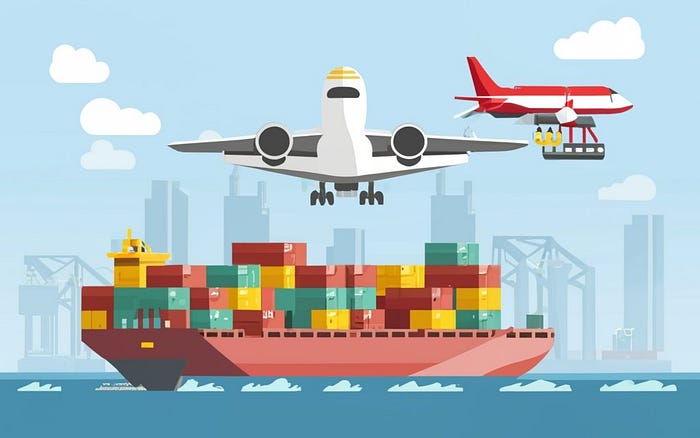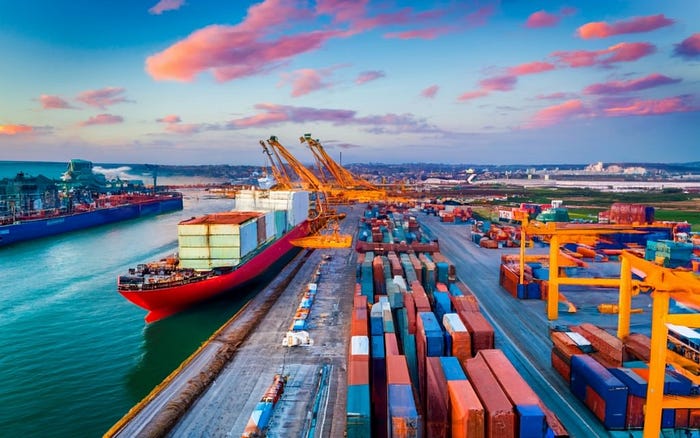How to Avoid High Shipping Prices from China during Christmas Season
The Christmas season is a busy and profitable time for many businesses, especially those that sell products online. However, it also comes with some challenges, such as high shipping costs from China, where many products are sourced or manufactured. Shipping costs from China can increase significantly during the Christmas season due to factors such as increased demand, limited capacity, peak surcharges, and weather disruptions. These costs can eat into the profit margins of businesses and affect their competitiveness and customer satisfaction.
In this article, we will explore some of the challenges and considerations for businesses that ship products from China during the Christmas season, and provide some strategies and tips to minimize shipping costs and manage customer expectations. We will also look at some case studies of successful navigation of Christmas season shipping costs by businesses.
Understanding the impact of shipping costs from China during the Christmas season

Shipping costs from China can vary depending on the mode of transportation, the destination, the weight and volume of the shipment, the service level, and the time of the year. Generally, shipping by air is faster but more expensive than shipping by sea or rail. Shipping by sea is cheaper but slower and more prone to delays and disruptions. Shipping by rail is a relatively new option that offers a balance between speed and cost, but has limited availability and coverage.
During the Christmas season, shipping costs from China can increase by as much as 300% compared to the rest of the year. This is because of the following reasons:
- Increased demand: The Christmas season is the peak season for e-commerce and retail, which means that there is a surge in demand for products and shipping services from China. This creates a supply and demand imbalance, which drives up the prices of shipping. For example, in 2020, the demand for air cargo from China to the US increased by 50% in November and December compared to the previous months.
- Limited capacity: The capacity of shipping services from China is limited by the availability of space, equipment, and personnel. During the Christmas season, the capacity of shipping services is often insufficient to meet the demand, which leads to congestion, delays, and higher prices. For example, in 2020, the capacity of sea freight from China to the US decreased by 13% in November and December compared to the previous months, while the capacity of air freight decreased by 25%.
- Peak surcharges: Many shipping carriers impose peak surcharges during the Christmas season to reflect the higher costs and risks of operating during this period. These surcharges can vary depending on the carrier, the mode of transportation, the origin, the destination, and the service level. For example, in 2020, FedEx applied a peak surcharge of $1 per kg for air freight from China to the US, while UPS applied a peak surcharge of $4 per kg for the same route.
- Weather disruptions: The Christmas season coincides with the winter season in many parts of the world, which can cause adverse weather conditions that affect the operations and reliability of shipping services. For example, snowstorms, fog, and typhoons can cause flight cancellations, port closures, and road blockages, which can delay shipments and increase costs. For example, in 2020, a severe snowstorm in the US caused delays of up to 10 days for air freight from China to the US.
The impact of high shipping costs from China during the Christmas season can be significant for businesses, as it can affect their profitability, competitiveness, and customer satisfaction. For example, high shipping costs can reduce the profit margins of businesses, as they have to either absorb the costs or pass them on to the customers. High shipping costs can also reduce the competitiveness of businesses, as they may lose customers to competitors who offer lower prices or faster delivery. High shipping costs can also reduce the customer satisfaction of businesses, as they may face complaints, cancellations, or returns from customers who are unhappy with the delivery time or the shipping fee.
Therefore, it is important for businesses to plan ahead and adopt strategies to avoid or minimize high shipping costs from China during the Christmas season.
Strategies to minimize shipping costs from China during the Christmas season

There are several strategies that businesses can use to minimize shipping costs from China during the Christmas season, such as:
- Negotiating with suppliers and carriers
- Utilizing alternative shipping methods
- Leveraging technology and logistics solutions
- Planning and forecasting for demand
- Tips for managing customer expectations
Negotiating with suppliers and carriers
One of the most effective ways to minimize shipping costs from China during the Christmas season is to negotiate with suppliers and carriers. Businesses can negotiate with suppliers and carriers to secure better prices, terms, and conditions for their shipments, such as:
- Lower rates: Businesses can negotiate with suppliers and carriers to lower the rates of shipping, especially if they have a long-term relationship, a large volume, or a flexible schedule. Businesses can also compare the rates of different suppliers and carriers and choose the most cost-effective option.
- Longer payment terms: Businesses can negotiate with suppliers and carriers to extend the payment terms of shipping, such as from 30 days to 60 days, which can improve their cash flow and reduce their financial pressure.
- Higher priority: Businesses can negotiate with suppliers and carriers to give their shipments a higher priority, which can ensure that their shipments are allocated space, equipment, and personnel, and avoid delays and disruptions.
- Lower surcharges: Businesses can negotiate with suppliers and carriers to lower or waive the peak surcharges, especially if they have a loyal or strategic partnership, or a special agreement.
Utilizing alternative shipping methods

Another way to minimize shipping costs from China during the Christmas season is to utilize alternative shipping methods. Businesses can use alternative shipping methods to reduce the cost, time, or risk of shipping, such as:
- Shipping by rail: Shipping by rail is a relatively new option that offers a balance between speed and cost, compared to shipping by air or sea. Shipping by rail can be faster than shipping by sea, as it can avoid the congestion and delays at the ports, and cheaper than shipping by air, as it can avoid the high rates and surcharges of the airlines. Shipping by rail can also be more reliable and environmentally friendly than shipping by air or sea, as it can avoid the weather disruptions and carbon emissions of the flights and vessels. However, shipping by rail has limited availability and coverage, as it depends on the infrastructure and connectivity of the railways. Therefore, businesses should check the feasibility and suitability of shipping by rail for their products and destinations.
- Shipping by courier: Shipping by courier is an option that offers a fast and convenient delivery, compared to shipping by freight. Shipping by courier can be faster than shipping by freight, as it can avoid the customs clearance and documentation of the cargo, and more convenient than shipping by freight, as it can offer a door-to-door service and a tracking system. Shipping by courier can also be more flexible and secure than shipping by freight, as it can offer a variety of service levels and insurance options. However, shipping by courier can be more expensive than shipping by freight, especially for large or heavy shipments. Therefore, businesses should weigh the benefits and costs of shipping by courier for their products and customers.
- Shipping by consolidation: Shipping by consolidation is an option that offers a cost-effective and efficient delivery, compared to shipping by individual. Shipping by consolidation means that businesses can combine their shipments with other businesses that have similar products, destinations, or schedules, and share the space, equipment, and cost of shipping. Shipping by consolidation can reduce the cost of shipping, as it can lower the rates and surcharges of the suppliers and carriers, and increase the efficiency of shipping, as it can optimize the utilization and allocation of the resources and services. However, shipping by consolidation can also increase the risk and complexity of shipping, as it depends on the coordination and cooperation of the partners and intermediaries. Therefore, businesses should choose reputable and reliable partners and intermediaries for shipping by consolidation.
Leveraging technology and logistics solutions

A third way to minimize shipping costs from China during the Christmas season is to leverage technology and logistics solutions. Businesses can use technology and logistics solutions to improve the visibility, control, and optimization of their shipping processes, such as:
- Using digital platforms: Businesses can use digital platforms to access and compare the information, prices, and services of different suppliers and carriers, and book and manage their shipments online. Digital platforms can help businesses to save time and money, as they can simplify and streamline the shipping processes, and provide transparency and convenience for the businesses and their customers. For example, businesses can use platforms such as [Freightos] or [Flexport] to ship their products from China during the Christmas season.
- Using smart devices: Businesses can use smart devices to monitor and track the status, location, and condition of their shipments, and receive alerts and updates on their shipments. Smart devices can help businesses to reduce the risk and uncertainty of shipping, as they can provide real-time and accurate data and feedback on their shipments, and enable them to take proactive and corrective actions if needed. For example, businesses can use devices such as [Roambee] or [Sensitech] to ship their products from China during the Christmas season.
- Using analytics tools: Businesses can use analytics tools to analyze and optimize the performance, efficiency, and profitability of their shipping operations, and make informed and strategic decisions on their shipping plans and policies. Analytics tools can help businesses to improve the quality and effectiveness of shipping, as they can provide insights and recommendations on their shipping patterns, trends, and opportunities, and help them to identify and solve their shipping problems and challenges. For example, businesses can use tools such as [Xiangrong] or [Shipwell] to ship their products from China during the Christmas season.
Planning and forecasting for demand

A fourth way to minimize shipping costs from China during the Christmas season is to plan and forecast for demand. Businesses can plan and forecast for demand to align their supply and demand, and avoid overstocking or understocking of their products, such as:
- Using historical data: Businesses can use historical data to analyze and predict the demand patterns and trends of their products, customers, and markets, and adjust their inventory and order levels accordingly. Historical data can help businesses to estimate the quantity, timing, and frequency of their shipments, and optimize their shipping schedules and budgets. For example, businesses can use data from previous years to plan their shipments from China during the Christmas season.
- Using market research: Businesses can use market research to understand and anticipate the needs, preferences, and behaviors of their customers and competitors, and tailor their product offerings and marketing strategies accordingly. Market research can help businesses to identify the opportunities and threats of their products, customers, and markets, and differentiate themselves from their competitors. For example, businesses can use surveys, interviews, or focus groups to plan their shipments from China during the Christmas season.
- Using scenario planning: Businesses can use scenario planning to create and evaluate different scenarios of their demand and supply, and prepare contingency plans for each scenario. Scenario planning can help businesses to cope with the uncertainty and volatility of their demand and supply, and mitigate the risks and impacts of any changes or disruptions. For example, businesses can use tools such as [What-If Analysis] or [Monte Carlo Simulation] to plan their shipments from China during the Christmas season.
Tips for managing customer expectations

A fifth way to minimize shipping costs from China during the Christmas season is to manage customer expectations. Businesses can manage customer expectations to ensure that their customers are aware and satisfied with the delivery time and cost of their products, such as:
- Communicating clearly: Businesses can communicate clearly with their customers about the shipping options, fees, and policies of their products, and provide accurate and timely information and updates on their shipments. Communicating clearly can help businesses to avoid confusion and misunderstanding with their customers, and build trust and loyalty with them. For example, businesses can use email, SMS, or social media to communicate with their customers about their shipments from China during the Christmas season.
- Offering incentives: Businesses can offer incentives to their customers to encourage them to choose the shipping option that is more cost-effective or convenient for the business, and reward them for their loyalty or patience. Offering incentives can help businesses to increase their sales and retention, and reduce their shipping costs and complaints. For example, businesses can offer discounts, free shipping, or loyalty points to their customers for their shipments from China during the Christmas season.
- Providing alternatives: Businesses can provide alternatives to their customers to give them more choices and flexibility for their shipping preferences, and accommodate their special requests or needs. Providing alternatives can help businesses to enhance their customer service and satisfaction, and increase their competitiveness and reputation. For example, businesses can provide options such as express delivery, local pickup, or gift wrapping to their customers for their shipments from China during the Christmas season.
Case studies: Successful navigation of Christmas season shipping costs
To illustrate how some businesses have successfully navigated the Christmas season shipping costs from China, here are some case studies of real examples:
- [Amazon]: Amazon is one of the largest and most popular online retailers in the world, and it sources and sells a variety of products from China. To cope with the high shipping costs from China during the Christmas season, Amazon has adopted several strategies, such as:
- Building its own logistics network: Amazon has invested in building its own logistics network, including its own planes, trucks, and warehouses, to reduce its dependence on external suppliers and carriers, and increase its control and efficiency of its shipping operations.
- Expanding its local presence: Amazon has expanded its local presence in different regions and countries, by opening more fulfillment centers, distribution centers, and delivery stations, to reduce the distance and time of its shipping from China, and offer faster and cheaper delivery to its customers.
- Leveraging its technology and data: Amazon has leveraged its technology and data to optimize its shipping processes, such as using artificial intelligence, machine learning, and cloud computing to automate and streamline its shipping tasks, and using big data, analytics, and algorithms to forecast and manage its demand and supply.
- [Wish]: Wish is one of the fastest-growing and most innovative e-commerce platforms in the world, and it specializes in selling low-cost products from China. To cope with the high shipping costs from China during the Christmas season, Wish has adopted several strategies, such as:
- Partnering with local carriers: Wish has partnered with local carriers in different regions and countries, such as [PostNL] in Europe, [USPS] in the US, and [Canada Post] in Canada, to offer more reliable and affordable shipping services to its customers, and reduce the customs and delivery issues of its shipping from China.
- Utilizing alternative shipping methods: Wish has utilized alternative shipping methods to reduce the cost and time of its shipping from China, such as using rail freight to ship its products from China to Europe, which can save up to 50% of the cost and 30% of the time compared to sea freight.
- Managing customer expectations: Wish has managed customer expectations to ensure that its customers are aware and satisfied with the delivery time and cost of its products, such as communicating clearly with its customers about the shipping options, fees, and policies of its products, offering incentives to its customers to choose the shipping option that is more cost-effective or convenient for the business, and providing alternatives to its customers to give them more choices and flexibility for their shipping preferences.
Conclusion
Shipping costs from China can increase significantly during the Christmas season due to factors such as increased demand, limited capacity, peak surcharges, and weather disruptions. These costs can affect the profitability, competitiveness, and customer satisfaction of businesses that ship products from China during this period. Therefore, it is important for businesses to plan ahead and adopt strategies to avoid or minimize high shipping costs from China during the Christmas season, such as negotiating with suppliers and carriers, utilizing alternative shipping methods, leveraging technology and logistics solutions, planning and forecasting for demand, and managing customer expectations. By doing so, businesses can not only save money and time, but also enhance their customer service and satisfaction, and increase their sales and retention.

Comments
Post a Comment